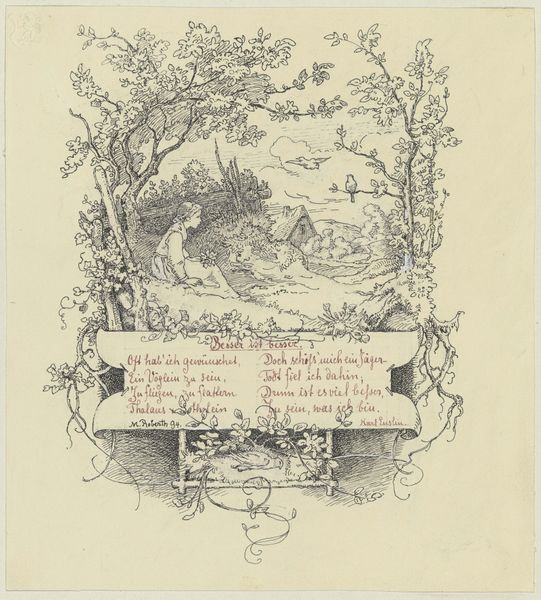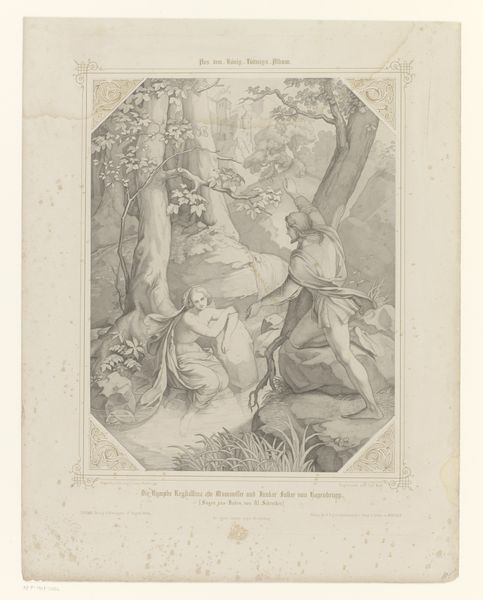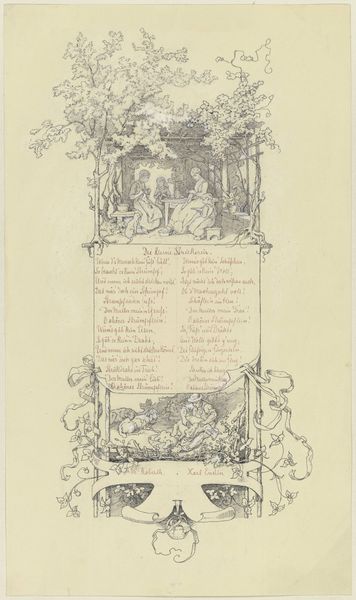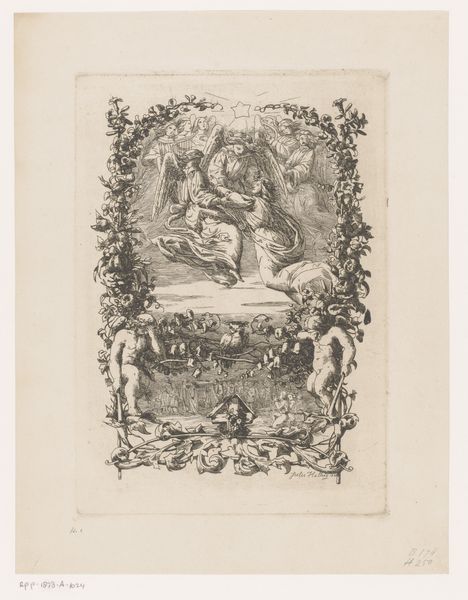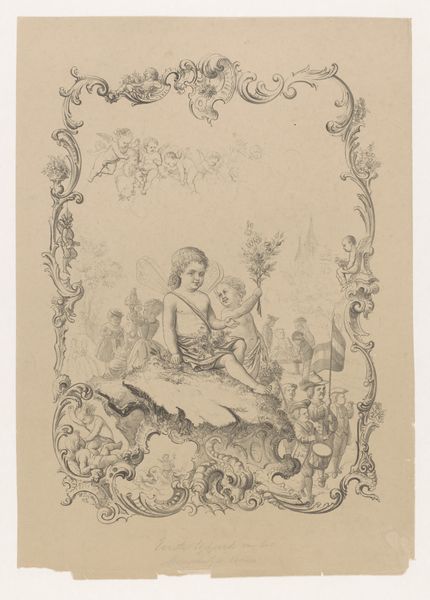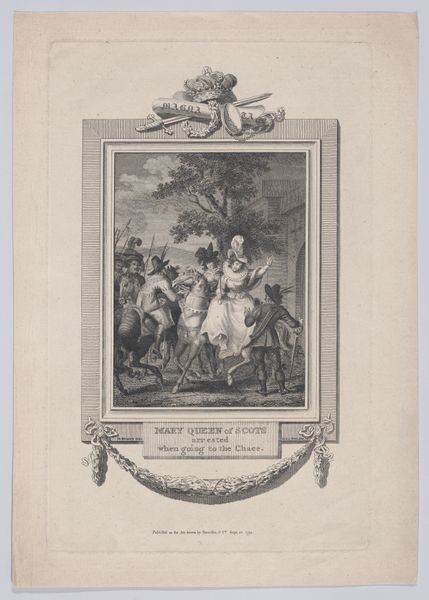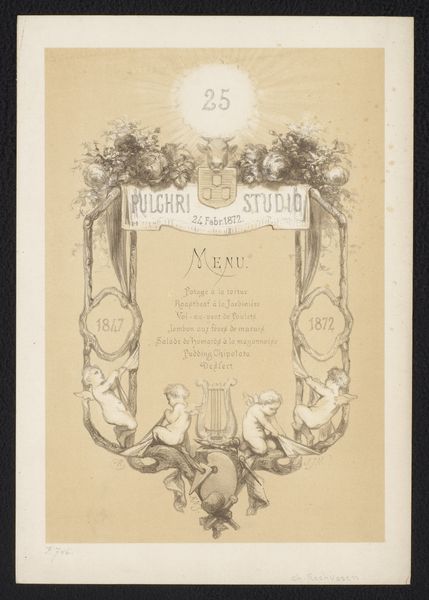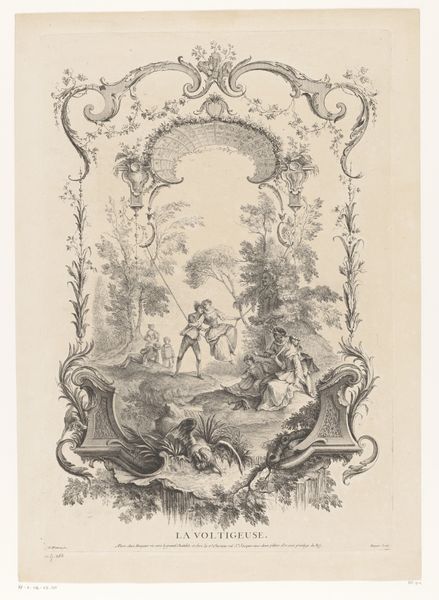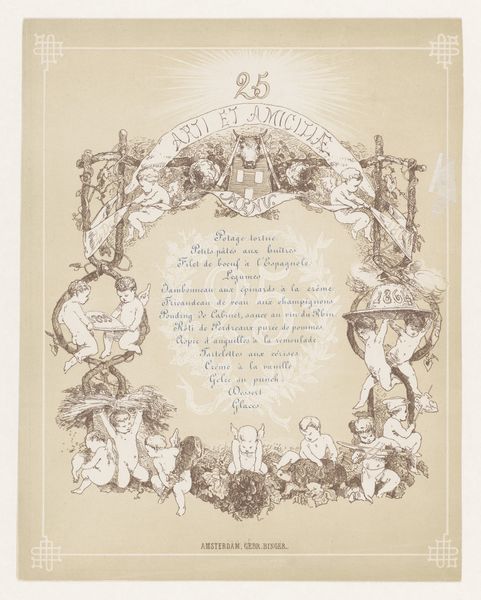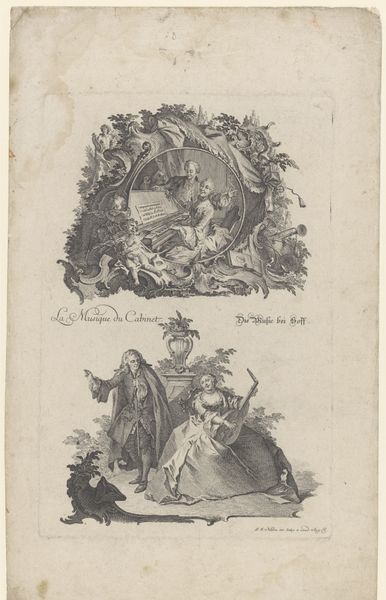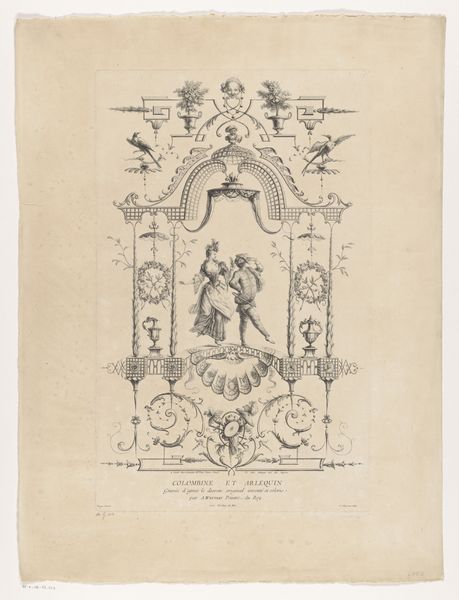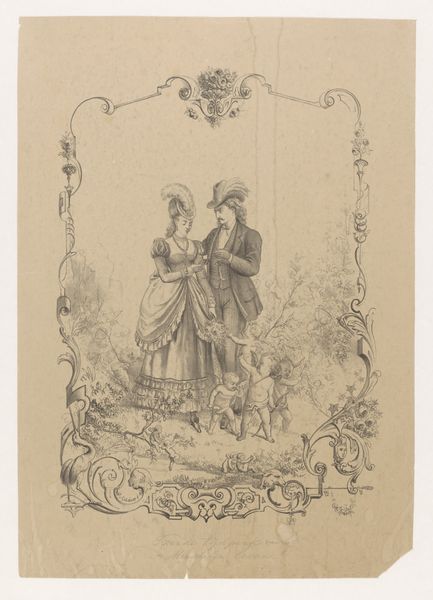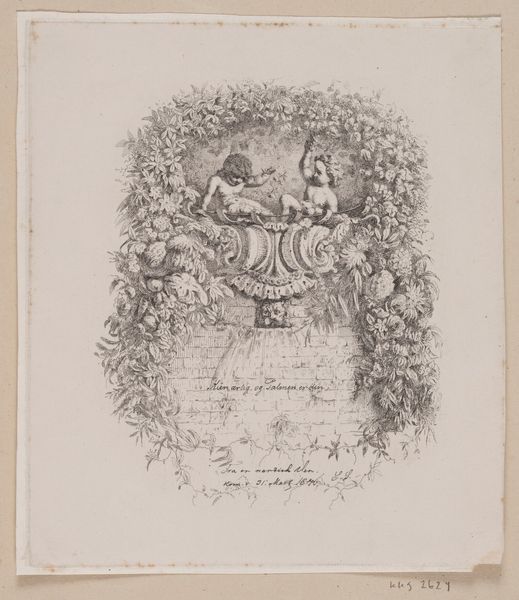
Copyright: Public Domain
Minna Roberth created "Die Maiblümlein weiß und rein," which translates to "The May Flowers White and Pure," sometime in the late 19th century. Roberth's delicate drawing invites us into a romanticized vision of nature, reflecting the era's fascination with folklore and idealized femininity. During this period, women artists navigated a complex social landscape, often confined to specific genres like portraiture or decorative arts. This work presents a young woman within an idyllic forest, gathering flowers. The accompanying verse, inscribed within the drawing, speaks to the purity and innocence associated with both the flowers and, by extension, the female figure. "Come, oh come, you little children, avenge me not for picking the Mayflowers, white and pure." There's a tension here; the act of "picking" suggests a loss of innocence, yet the woman remains framed within a symbol of purity. Roberth's drawing encapsulates the Victorian era's complex relationship with women, where they were simultaneously celebrated for their virtue and confined by societal expectations. This tension between freedom and constraint, purity and experience, resonates in the delicate lines of her drawing, inviting us to consider the lived experiences of women within the historical narrative.
Comments
No comments
Be the first to comment and join the conversation on the ultimate creative platform.
